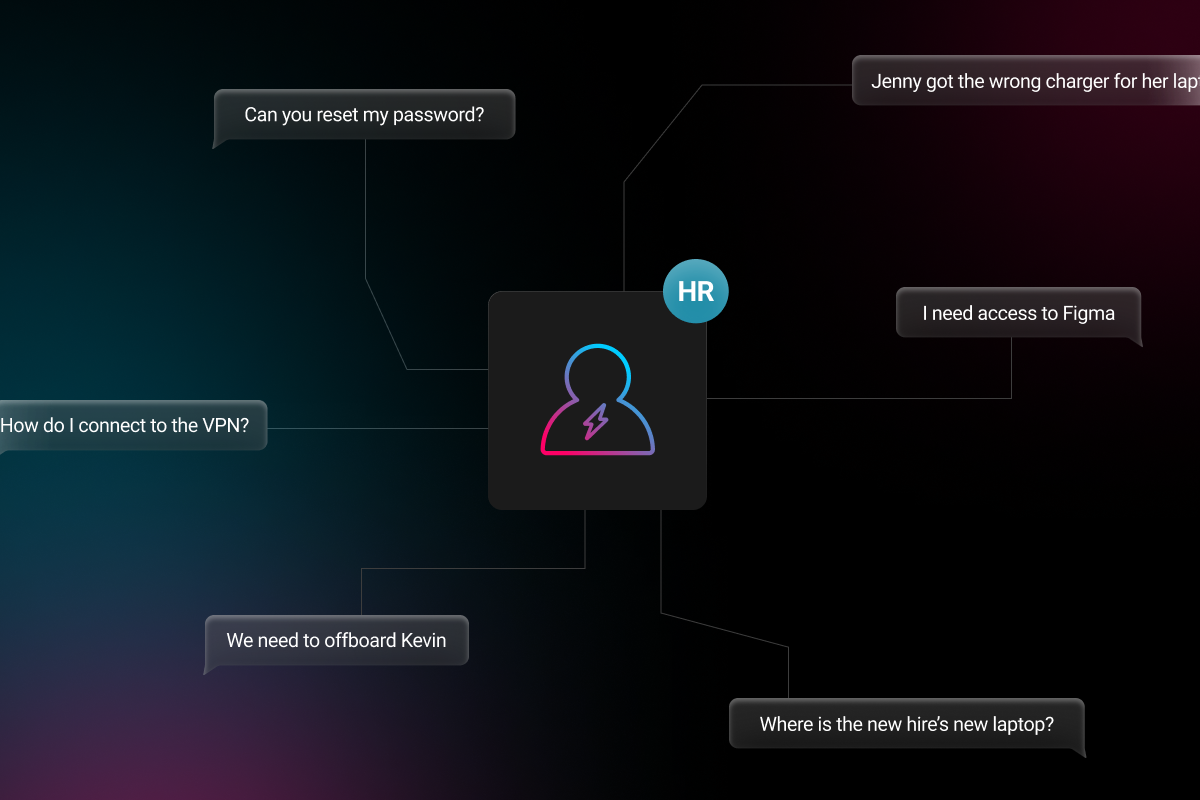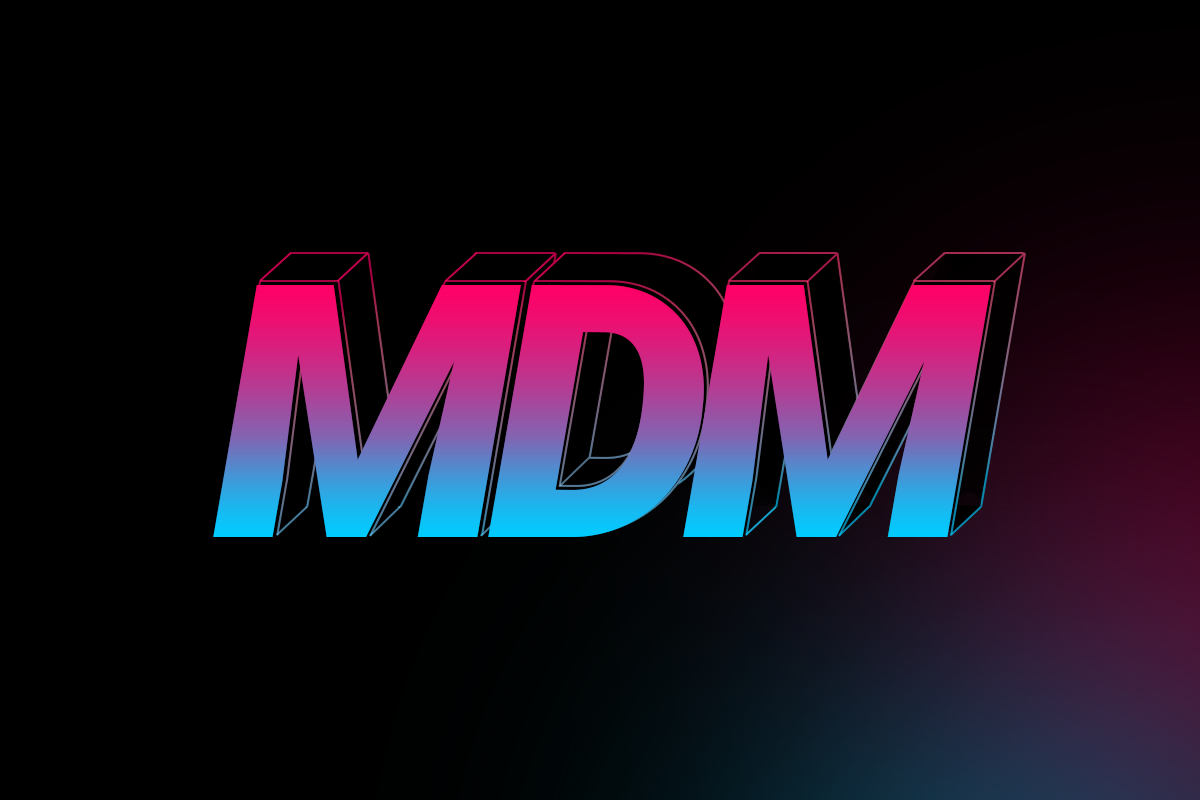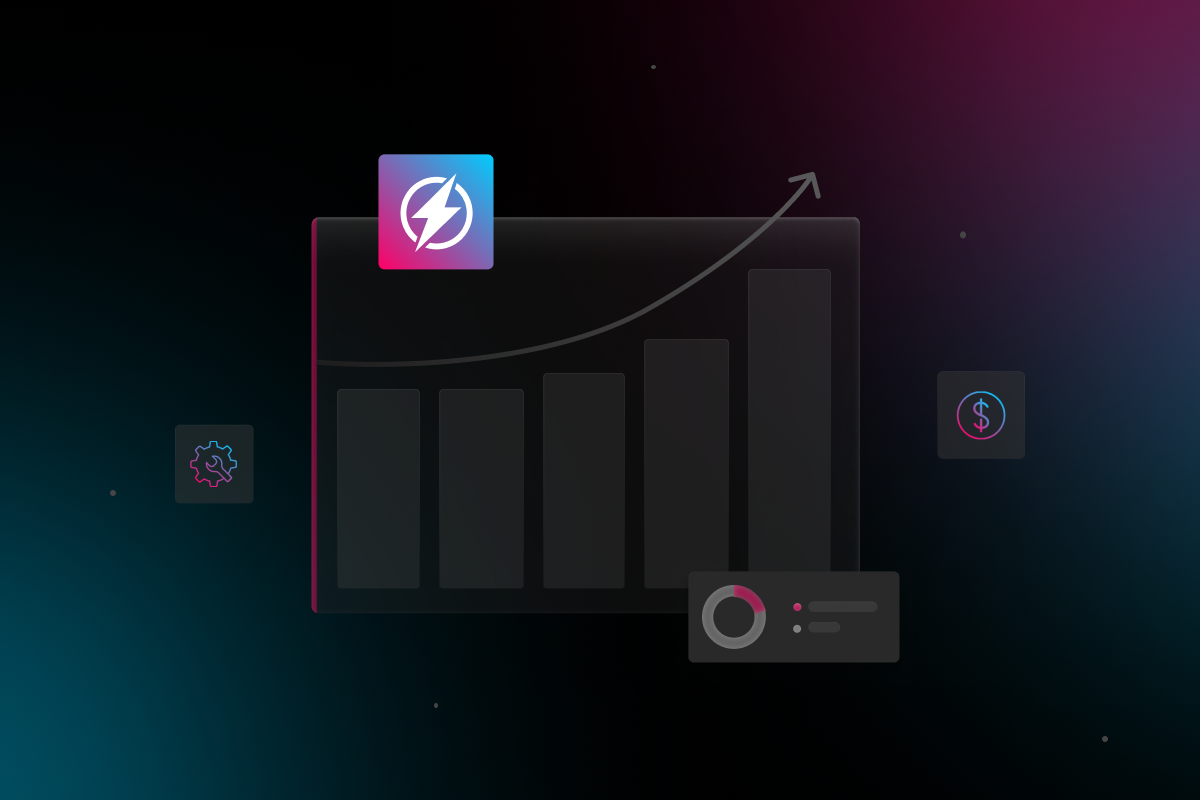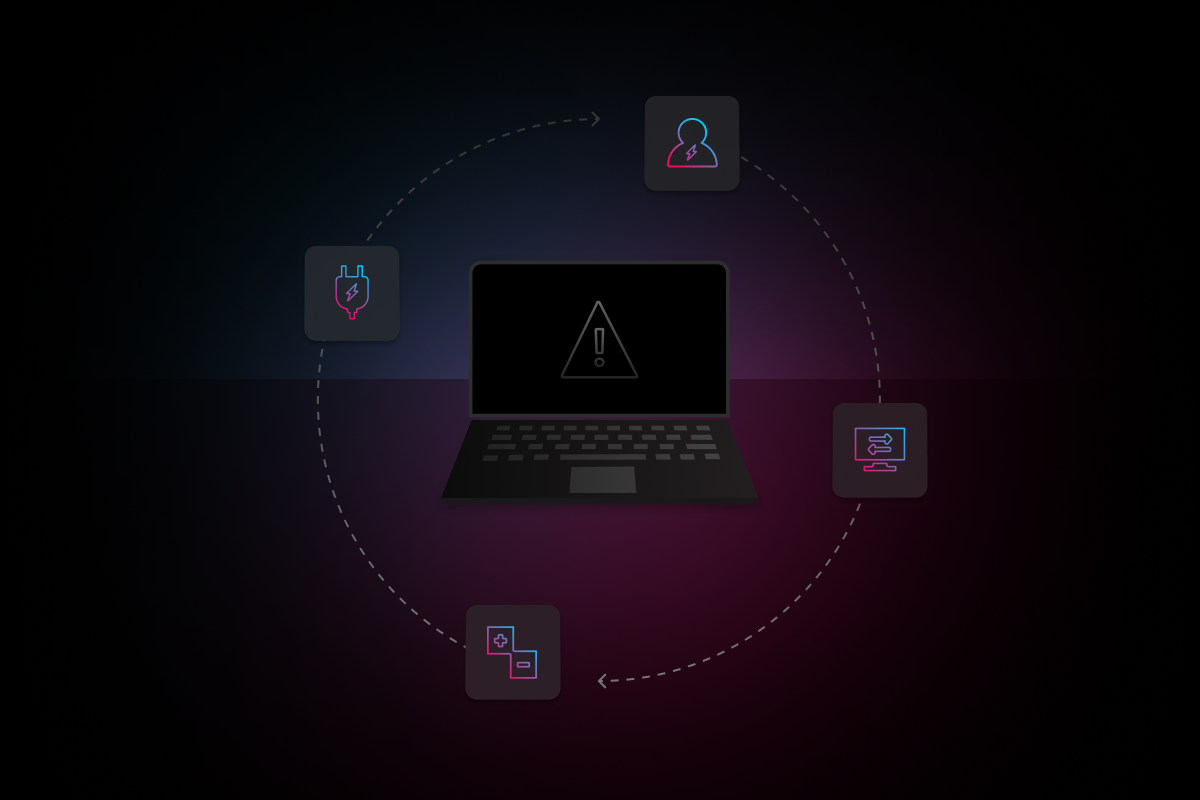
Employees rely on an increasing number of devices, accessed from a variety of locations, to carry out their work. This brings about a new set of considerations for business connectivity, privacy, security, and management. The solution to these challenges? Mobile Device Management (MDM).
TL;DR
- Mobile Device Management (MDM) is a type of software that secures, controls, and enforces policies on corporate devices.
- MDM addresses challenges related to security, connectivity, and functionality, while protecting your corporate network.
- MDM enhances your control of business devices, boosts efficiency and productivity, improves compliance, streamlines employee onboarding and offboarding, and mitigates the risk of cyber attack.
- Certain MDM solutions can be costly to implement, and difficult to manage and customize.
- Electric works with best-in-class MDM partner, JumpCloud, to help SMBs automate processes that keep your devices healthy, secure, and up-to-date.
What Is MDM (Mobile Device Management)?
MDM, or Mobile Device Management, is a type of software that enables admins to secure, control, and enforce policies on laptops, smartphones, tablets, and other devices being used in the workplace.
With the continuous rise in security threats and data breaches, MDM software is essential to the modern workplace. MDM solves challenges surrounding the security, connectivity, and functionality of corporate devices, while simultaneously protecting the corporate network.
MDM software typically runs either in the cloud or on-premise, and allows you to remotely manage and configure devices. First, you need to install the MDM software on all company devices to enroll them in the MDM server.
The management console can then be used to remotely push updates and configurations to mobile devices. With a solution like the Electric IT Hub, you can oversee MDM in a centralized platform alongside other key IT and security management features, including hardware procurement and employee onboarding.
How Can SMBs Benefit from MDM?
Mobile Device Management isn’t just for large organizations with expansive teams.
Today, small and medium-sized businesses manage a growing number of devices that employees access from various locations. Combined with the ever-increasing rate of cyber attacks targeting SMBs, it’s imperative that businesses of all sizes have an MDM solution as part of their business IT and security.
The challenges of inventory control and application management are daunting enough. When you add in security and reputational risks, the benefits of Mobile Device Management for small businesses become readily apparent.
Electric partners with JumpCloud, a best-in-class MDM solution, to strengthen SMB’s defense against threat actors. The Electric IT Hub is fully integrated with JumpCloud MDM, offering SMBs:
- Centralized management: gain complete visibility of your entire device inventory, with real-time insights into health and security. Remotely lock and wipe devices in the event of loss or theft.
- Proactive updates: roll out standardized policies and security updates in a few clicks. Keep all of your devices up-to-date, all the time. No downtime or manual lifting is required.
- Automated provisioning: securely set up new or transition devices between employees with pre-established user settings and access permissions.
The 5 Advantages of MDM
Given that mobile devices are easily stolen or lost, the risk of valuable corporate data being viewed by the wrong person is high. A Mobile Device Management solution gives you the ability to lock, wipe, and locate devices used in your workplace. In remote and hybrid environments, MDM also eliminates the need for physical device management on-site at an office. Regardless of the size of your business, Mobile Device Management provides indisputable benefits:
1. Control Over All Corporate Devices
When a variety of devices and operating systems are being used, it may be hard to keep track and build unified device management processes. With MDM, your organization has better visibility over its devices as the software pulls valuable information from managed devices into a centralized dashboard. With clear insights into device status and security level, it becomes easier to manage security risks.
MDM also gives you full control over the entire device lifecycle, allowing you to configure devices remotely, replace them on time, and handle updates. If an employee leaves the company, all business-related information can be deleted from their device in a matter of clicks.
2. Lower Costs and Increased Productivity and Efficiency
With MDM, you can manage every step of device management proficiently from a single platform and automate device configurations and enrollments, which helps save valuable time and money. When managing a fleet of devices, automation brings valuable benefits — devices are set up faster, and human errors are decreased.
3. Meeting MDM Compliance Regulations
Operating within regulatory guidelines and standards is important to any organization, but it can be hard to ensure that all devices are in compliance. With MDM, compliance initiatives are managed from one unified console, enabling better protection while operating within the legal requirements.
4. Streamlined Onboarding and Offboarding
MDM streamlines the onboarding process for new employees by ensuring their devices are configured with the appropriate apps and user permissions from their very first day. This creates a positive first impression and supports the employee to get up and running as quickly as possible. Likewise, when an employee leaves your company, MDM enables you to remotely revoke permissions and wipe sensitive information from their device on their last day.
5. Device and Data Security
Unmanaged mobile devices pose numerous cybersecurity risks. MDM provides an effective way to remotely secure data and devices with customized restrictions and configurations.
With MDM, the use of certain device apps or functionalities can be prevented, and the use of passcodes and MFA can be enforced. If the same device is used for both personal and business purposes, the user’s work data is kept separate and secure.
What are the Features of MDM?
With many solutions available in the marketplace, MDM features vary extensively from provider to provider, but the list below includes some of the most crucial:
Top Features of MDM:
- Device provisioning
- Application management
- Application configuration
- Device management from a central console
- Automatic, real-time visibility into a device inventory
- Device health insights (including OS version, battery health, and warranty information)
- Device reporting
- Asset management (only from premier MDM solutions)
- Device data encryption
- Remote lock and wipe of a device when it is lost or stolen
- Organization-wide policy enforcement
What are the Limitations of MDM?
While MDM solves an immense challenge, it can be bottlenecked by poor implementation and lack of expertise.
- Customization: Because every company is different, every implementation of MDM must be tailored to a business’ specific set of challenges. Not all solution providers will adapt to your individual needs during implementation.
- Implementation costs: MDM can be costly to implement, with additional monthly charges per device. With Electric, you can access best-practice Mobile Device Management alongside a range of other IT and security management features – all for just $25pp per month.
- Complexity/ongoing management: Things get complicated quickly when you’re dealing with multiple employees, devices, operating systems, applications, and tools. There’s a reason MDM is a component of enterprise mobile management. With traditional solutions, it takes an IT team with specialized knowledge and an extensive track record to get it right. For smaller businesses, it often makes more sense to choose a managed MDM solution like the one we offer at Electric.
Simplify your Mobile Device Management
Electric offers managed MDM for small and medium-sized businesses in partnership with JumpCloud. Book a demo of the Electric IT Hub to learn more about our MDM and IT management platform.
MDM vs BYOD
BYOD, or Bring Your Own Device, is a policy that some organizations choose to offer their employees. In this scenario, employees can use their own personal laptops or mobile phones for work, instead of a company-provided device. While this can initially present a cost-saving opportunity for small businesses, the associated risks are high.
Unmonitored personal devices are more vulnerable to cyber attack than those that are centrally managed and protected. If you do rely on BYOD, make sure to install MDM software on the relevant employee devices to mitigate these risks.
Is MDM Software Secure?
MDM is no longer a luxury but a necessity for your organization. Whether it is preventing malware, data loss, or downtime — installing a Mobile Device Management solution on your organization’s devices can substantially reduce security risks by:
- Enforcing strict login rules (e.g., multi-factor authentication)
- Encrypting all data on devices
- Remotely securing or wiping a lost or stolen device
- Automatically pushing patches and OS updates
- Standardizing policies company-wide
- Restricting applications by user
Get Started with Electric X JumpCloud MDM
At Electric, we partner with JumpCloud, an industry-leading Mobile Device Management solution provider, to automate processes that keep your devices healthy, secure, and up-to-date.
Getting started with MDM is not an easy process to navigate, but you don’t have to do it alone. Contact Electric today to learn more about our IT and Security management platform.
FAQ
1. What is Mobile Device Management (MDM)?
MDM is software that enables businesses to remotely secure, control, and manage company devices to protect data and maintain performance. MDM ensures devices stay updated, secure, and configured in accordance with company policies.
2. Why do small and midsize businesses need MDM?
SMBs now manage a large number of devices across remote and hybrid teams, making centralized control and visibility a necessity. MDM enhances cybersecurity, saves time, and eliminates the inefficiencies of manual device oversight.
3. What are the main benefits of MDM?
MDM enhances device control, lowers costs, supports compliance, streamlines on and offboarding, and strengthens data security. These efficiencies help businesses to operate smoothly without the need for large IT teams or in-house expertise.
4. What key features should an MDM solution include?
Core features of MDM include device provisioning, app management, centralized oversight, real-time inventory visibility, policy enforcement, and the ability to lock or wipe lost devices. Advanced solutions also offer reporting, asset management, and detailed health insights.
5. What are the limitations or challenges of MDM?
MDM can be complex and costly to implement, making managed MDM solutions a more practical option for many SMBs. Without customized setup and expert oversight, businesses may struggle to get the full value from their MDM investment.



